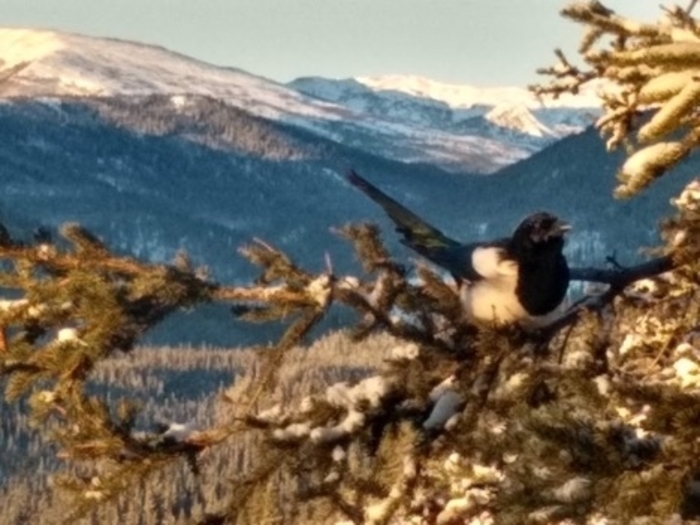A winter’s morning walk through the boreal forests of Denali National Park is a quiet affair. The cacophony of summer’s bird song is replaced with an ethereal stillness that only hints at the harsh realities facing birds who winter in the far north.
While the allure for species to migrate to Alaska for the breeding season is simple (abundant food resources and nesting locations), the reasons to stay year-round in such an inhospitable environment are more nuanced. For a bird to survive year-round in the frigid subarctic, they must be able to excel at two critical tasks: maintaining their body temperature and procuring enough food to stay (somewhat) active and sustain their body heat. None of this is easy. In fact, it is so rare and difficult that most birds evolved to risk the daunting alternative of migrating/navigating thousands of miles to escape winter in the north. Consequently, there are only a handful of birds in Denali that are considered “residents”, with different bird groups using novel strategies for winter survival.
Due to their large size, Corvids such as ravens and magpies lose heat at a slower rate than other, smaller passerines. These are some of the more active birds you’ll see in the winter in Denali. Corvids are known for their high intelligence, which boosts their ability to create and remember the location of the many caches where they store food for future use. Additionally, ravens (and to a lesser extent, magpies) have evolved to take advantage of large carnivores by following wolves in the winter and feeding on fresh kills of moose or caribou. Ravens are more likely to share food resources in the winter, and their black coloring is conspicuous against a snowy white background, so once one raven has found a kill, more ravens will typically join the feast.
Surprisingly, other large resident birds like grouse and ptarmigan don’t have to worry about diminished food supplies in the winter- there are plentiful willow buds, catkins, and dwarf birch twigs to feed on. That being said, these Galliformes still need to maintain their body heat when temperatures plummet. One way they do this is by taking advantage of the insulating properties of the subnivean zone. The snow layer between the frozen ground and the air above can develop an ice “roof” that helps burrows and tunnels hold their structural integrity, which in turn provides shelters for birds and mammals toughing out the winter. This insulating blanket of snow suits the seasonal needs of small mammals and large birds because they can tunnel or break out if the freeze/thaw cycle creates a thick layer of ice on top of the snowpack. Small songbirds, however, cannot muscle through even the thinnest layers of ice and need to find other ways to stay warm.
Denali’s tiniest avian residents, including Boreal and Black-capped Chickadees, Red-breasted Nuthatches, and Common Redpolls, have a myriad of strategies to survive the winter. Even in the lower 48 it is common for birds to fluff out their feathers in order to create warm, insulating air pockets. In the subarctic, songbirds do the same thing, but puff up so greatly that they appear to be twice as large as they appear in the summer months. Think of a small child wearing a thick sweater, snow pants, a vest and a puffy down jacket, and you’ll get the picture!
Another strategy small birds deploy is similar to one used by arctic animals worldwide- they keep their core much warmer than their extremities. If a Boreal Chickadee kept its feather-free legs the same temperature as its core, it would waste a lot of precious calories to heat the legs because they have no insulation and cool quite rapidly. To combat this, most birds keep their feet extremely cold (approx. 30° F) and employ a countercurrent heat exchange similar to the one caribou and whales use in their feet and fins, respectively. Essentially, the arteries (full of warm blood) are in close contact with the leg’s veins and transfer some of their heat to the cold venal blood that is traveling back to the bird’s core. By warming this inward-bound blood, the bird is able to decrease heat loss in its core.
In a few months, however, these winter residents will have plenty of rewards to show for their long dark journey through Denali’s winter. They’ll have first crack at prime habitat as the land awakens and brings forth a bounty of insects, berries, and buds!
While Denali’s wings of winter are impressive in one way, summer bird life in Denali is another special thing to behold as over 150 species of birds return from six different continents. This summer we’re excited to bring back ornithologist Scott Weidensaul whose research in Denali (and elsewhere) is helping scientists better understand the natural histories and migratory lives of birds. Please join us June 5-11 to hike and learn with Scott and Camp Denali’s bird-obsessed Naturalist Guides.




